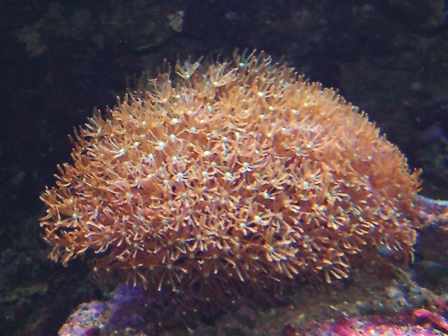Description: The Palm tree polyp is a colonial, encrusting mat-like coral whose eight tentacles have feathery pinnules resembling the branches of a palm tree, thus its common name. The polyps can be found in a variety of colors including brown, cream, green, pink, purple, white and yellow, while the mat that contains the polyps is brown, gray or tan.
Size: They are capable of reaching colony sizes in excess of 12 inches (30 cm) across.
Behavior: When startled, the polyps retreat into their tubular stalks, or calyces for protection.
Diet: Palm tree polyp corals obtain food by catching plankton with their tentacles and absorbing dissolved organic matter from within the water column. They also have a symbiotic relationship with a marine algae known as zooxanthellae. The coral provides the algae a safe environment to live and in return the algae, through photosynthesis, produces oxygen and sugars that the coral needs. Through this process 70 to 95% of the corals nutritional needs are provided.
Reproduction: They can reproduce sexually by releasing sperm and eggs into the open waters. After fertilization, larva is produced, settles to the bottom and new colonies are formed.
Habitat/range: Palm tree polyps are found on back-reef slopes, fore-reef slopes and rubble
zones with tidal currents throughout the Indo-Pacific region.
Status: Not evaluated for IUCN Red List



